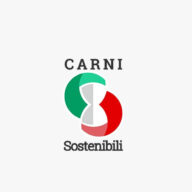
Fundamentals of animal wellness: the five freedoms
Animal welfare is one of the aspects that attract the most attention when it comes to talking about the sustainability of meats and cured meats. In reality, since 1965, the year of publication of the first scientific paper on the subject (the Brambell report), the principles of the “five freedoms” were born to protect the welfare of income animals.
These guidelines are still the basis of international legislation on animal welfare recalling the respect for the basic and primary needs of every animal, whose protection is essential especially in captive conditions.
Despite this, the debate on the issue has yet to find a unequivocal definition. Most experts agree to viewing animal welfare as a balance between the individual and the environment that surrounds it, where “environment” refers to a heterogeneous group of factors including the physical environment, the interaction with other animals and humans, the absence of disease or predators. It may therefore be that these values are guaranteed better in a farm that is run in respect of the principles, rather than a poorly controlled grazing.
To try and pass to an ever more objective vision, in recent years several projects were launched to measure the level of animal welfare, based on tangible indicators that reflect the psychophysical health status and the level of stress of the animal.
The five freedoms are the following:
- From hunger, thirst and malnutrition by ensuring to the animal access to fresh water and a diet that maintains full health.
- To have a proper physical environment giving the animal an environment including shelter and a comfortable resting area.
- From pain, injury, disease foreseeing them or diagnosing and treating them quickly.
- To express the specific behavioural characteristics of their species providing the animal with sufficient space, proper facilities and the company of animals of their own species.
- From fear and distress ensuring the animal conditions and care that do not involve psychological suffering.
The Sustainable Meat Project





